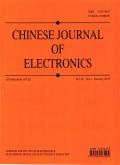基于综合特征HFOs和RF-LR自动检测的致痫病灶定位算法研究
IF 1.6
4区 计算机科学
Q3 ENGINEERING, ELECTRICAL & ELECTRONIC
引用次数: 0
摘要
研究表明,癫痫脑电图信号中250 - 500hz的快速波纹比80 - 250hz的波纹更具有病理性,更接近致痫灶本身。然而,快速波纹和高频振荡(hfo)的伪影容易混淆和难以区分,人工视觉筛选既费时又无法避免主观性。为此,本文提出了一种基于综合特征hfo自动检测和随机森林-逻辑回归(RF-LR)的致痫灶定位方法。本文首先从预处理后的癫痫脑电图信号中提取多元特征,并利用随机森林算法过滤出三个重要度较高的特征,据此识别出含有HFOs的可疑线索。然后,利用小波时频图对疑似引线进行初步筛选,提高信号定标效率,进一步在时间和频率上对hfo进行定位。最后,采用逻辑回归模型对hfo中的波纹和快速波纹进行自动分类和识别。结果表明,该模型检测纹波的灵敏度为89.37%,特异度为88.26%,准确度为90.1%;检测快速纹波的灵敏度为94.31%,特异度为94.83%,准确度为93.46%。与单一特征相比,本文的多元特征更全面地表征了复杂的癫痫脑电图信号,为癫痫灶的定位提供了更准确的信息。本文提出的hfo自动检测算法可以在短时间内分析大量数据,具有良好的检测性能,可以帮助临床医生准确确定致痫灶区域。本文章由计算机程序翻译,如有差异,请以英文原文为准。
A Study of Epileptogenic Foci Localization Algorithm Based on Automatic Detection of Comprehensive Feature HFOs and RF-LR
Studies have shown that fast ripples of 250–500 Hz in epileptic electroencephalography (EEG) signals are more pathological and closer to the epileptogenic focus itself compared to ripples of 80–250 Hz. However, artifacts of fast ripples and high-frequency oscillations (HFOs) are easily confused and difficult to discriminate, and manual visual screening is both time-consuming and unable to avoid subjectivity. To this end, this paper presents a method for localizing epileptogenic foci based on the automatic detection of integrated feature HFOs and random forest-logistic regression (RF-LR). In this paper, we first extract multivariate features from the preprocessed epileptic EEG signals, and use the random forest algorithm to filter out three features with high importance, based on which, suspicious leads containing HFOs are identified. Then, wavelet time-frequency maps were used for the primary screening of suspected leads to improve the signal calibration efficiency and further localize HFOs in time and frequency. Finally, a logistic regression model was used to automatically classify and identify ripples and fast ripples in HFOs. The results show that the sensitivity, specificity, and accuracy of the model for detecting ripple are 89.37%, 88.26%, and 90.1%, respectively; the sensitivity, specificity, and accuracy for detecting fast ripple are 94.31%, 94.83%, and 93.46%, respectively. Compared with single features, the multivariate features in this paper more comprehensively characterize the complex epileptic EEG signals and provide more accurate information for the localization of epileptogenic foci. The automatic detection algorithm of HFOs proposed in this paper can analyze a large amount of data in a short time and has a good detection performance, which can help clinicians accurately determine the region of epileptogenic foci.
求助全文
通过发布文献求助,成功后即可免费获取论文全文。
去求助
来源期刊

Chinese Journal of Electronics
工程技术-工程:电子与电气
CiteScore
3.70
自引率
16.70%
发文量
342
审稿时长
12.0 months
期刊介绍:
CJE focuses on the emerging fields of electronics, publishing innovative and transformative research papers. Most of the papers published in CJE are from universities and research institutes, presenting their innovative research results. Both theoretical and practical contributions are encouraged, and original research papers reporting novel solutions to the hot topics in electronics are strongly recommended.
 求助内容:
求助内容: 应助结果提醒方式:
应助结果提醒方式:


